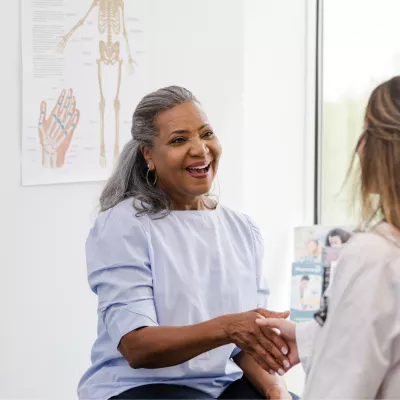- David Marks

Choose the health content that’s right for you, and get it delivered right in your inbox.
Statistics can be confusing, difficult to remember and downright boring. But when it comes to women’s heart health, they tell some very compelling stories.
For example, 90 percent of women have one or more risk factors for heart disease at some point in their lives, according to the American Heart Association. Yet, only 20 percent of women think heart disease is a serious threat to their health. In other words, the vast majority of today’s women aren’t taking their heart health seriously enough. If you’re one of them, here’s one more statistic that may change your mind. 80 percent of cardiovascular diseases are preventable. Fortunately, there are specific steps you can take to lower your heart disease risks.
Step one is getting a better understanding of the risk factors women are facing.
“Diabetes, hypertension, dyslipidemia, being overweight, having had preeclampsia during pregnancy — each one can make heart disease more common. Using tobacco or having a family history of heart disease at a young age are also risk factors. Some of these are modifiable. Some we are just born with and can’t do much about. It’s our responsibility to know what our individual risk factors are and how to address each one so we can keep ourselves as healthy as possible,” said Michelle Dew, MD, FACC, Cardiologist, AdventHealth.
In addition to the risk factors, it’s important to know the symptoms of heart attack in women.
Sometimes, there are unusual pains NOT on the left side of the chest, perhaps in the abdomen, right arm or shoulder, middle of the back, even in the teeth or jaw.
“Symptoms in women can be sneaky. We tell women that if there is something out of the ordinary for you and it persists, ask a medical provider. You know your body better than we do. So ask someone if something seems off,” said Dew.
Once you know more about your heart health, there are a number of actions you can take to lower your risks, including:
- If smoking or using tobacco, stop now!
- During commercial breaks on TV, do five minutes of squats, sit ups, or just walk through the house instead of phone scrolling.
- Before sleep, go through your gratitudes and find the bits of joy from the day.
- Fill half of your dinner and lunch plate with vegetables.
“And if you can’t even imagine how to wedge in regular exercise, yoga or meditation into your busy day, then try parking further away from the door, walking up the stairs, skipping the radio on the way into work and listening to a supportive podcast. And investigate nonalcoholic beverages to help relax after a long day at work,” said Dew.
Identify your risk of a heart attack or stroke
Get started by taking our free, online heart disease risk assessment. Based on your risk assessment, you can schedule any of the following more comprehensive screenings:
- Preventative Cardiac Screening ($35)
- Calcium Scoring Package ($50)
- Peripheral Vascular Package ($79)
You can do also do all three screenings for just $99.
Blood Pressure: If you have the diagnosis of hypertension then check it once a month if it’s under control — more often if you and your provider are trying to get your numbers to goal. If you do not have the diagnosis of hypertension, then check a couple of times a year.
Cholesterol Numbers: Cholesterol is a sticky substance that likes to adhere to the inside of arteries, making heart attacks and strokes more likely. Unfortunately, cholesterol numbers increase after menopause, so have these checked yearly.
Blood Sugar: If you have a diagnosis of diabetes, it’s essential to know your hemoglobin A1c within the past 6-12 months.
Calcium Score: If you have cardiovascular risk factors, it may benefit you to have a test which can help your medical provider estimate your risk for heart attacks and heart disease and make suggestions to avoid heart problems.



